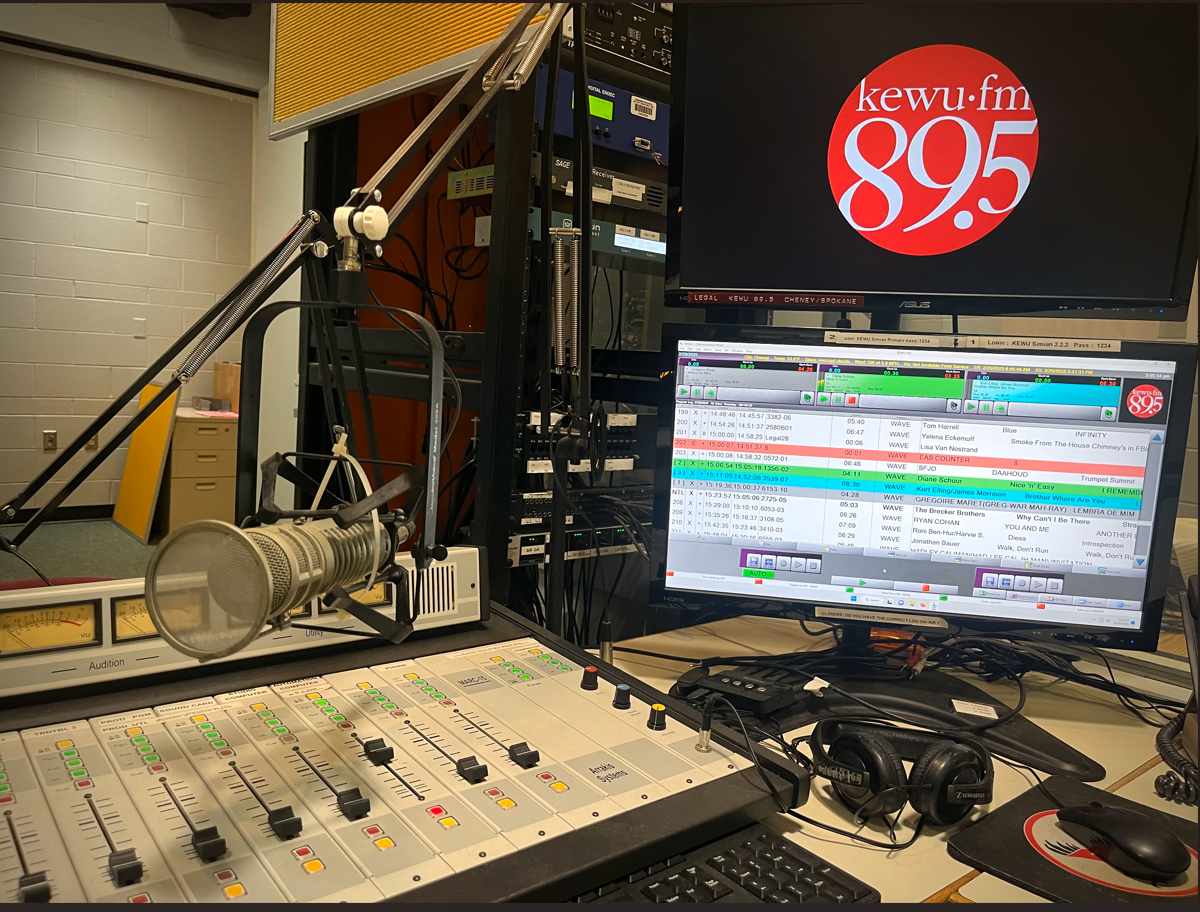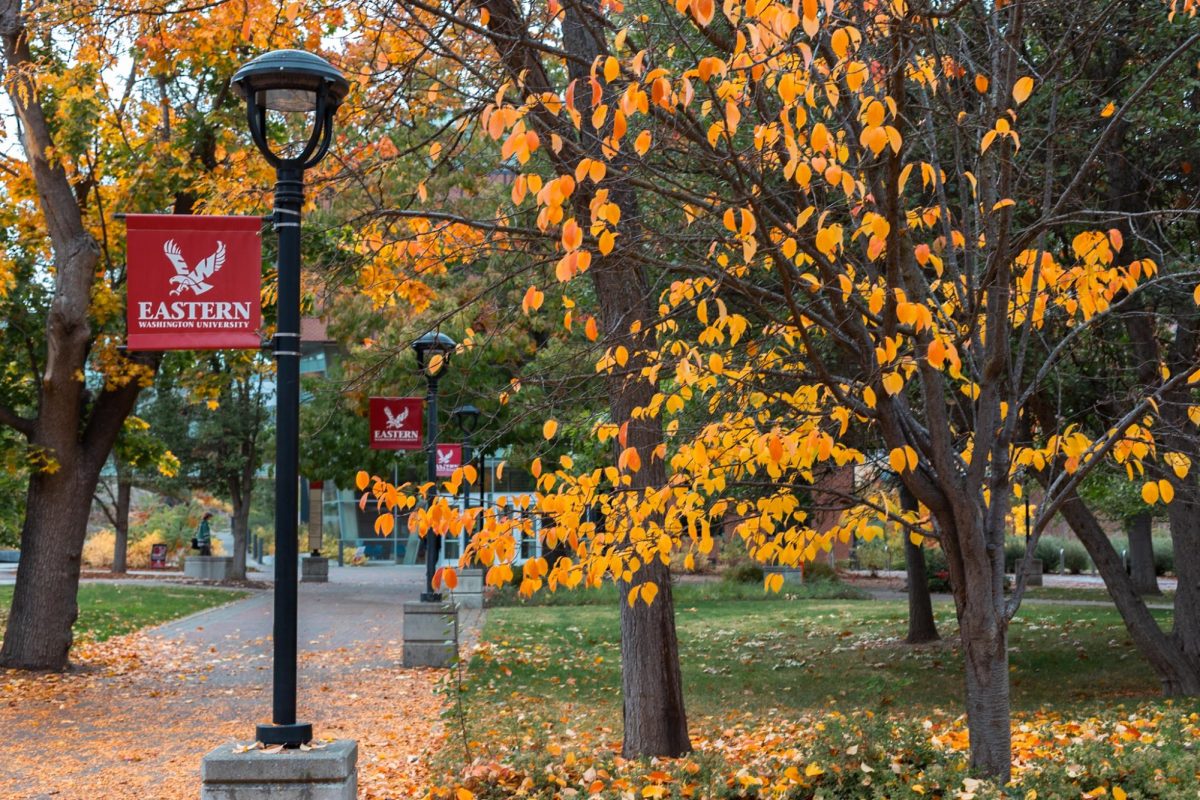Financial Aid Director Bruce DeFrates said that 18 to 20 percent of financial aid recipients—approximately one in five—were parents, based on a 2010-2011 state report.
DeFrates said, “I don’t know if it is valid to extrapolate these numbers to the whole [student] population or not, but if you do, the number of EWU students who have kids is around 18 to 20 percent, or about 2,500.”
This is consistent with a report from the Washington Student Achievement Council, which states that in 2009, 30 percent of students at public four-year colleges in Washington state were 25 or older. The council’s report estimated that a considerable majority of these nontraditional students had dependents— mostly children.
Twenty or 30 percent of students having dependents is not a small group, yet many college-level educational approaches still seem geared only to traditional students. The Center for Postsecondary and Economic Success has information about traditional versus nontraditional students.
While there is no agreed-upon definition for the terms “traditional student” or “nontraditional student,” students can be generally defined through a series of characteristics, according to the National Center for Education Statistics. Traditional students are 18 to 24 years old, came to college directly from high school with no intervening career time, have no dependents and rely on someone else for primary financial responsibility, typically parents.
Nontraditional students may fall into the same age bracket, but are often older than 24. Eastern’s own Office of Institutional Research reports that in fall 2011, 23.3 percent of undergraduate students and 71.7 percent of graduate students were over the age of 25.
Nontraditional students may have taken years off after high school to work before coming to college, or they may have returned to college after earning a previous college degree. They do not rely on anyone else for financial responsibility and the majority have dependents, according to the National Center for Education Statistics. The center estimated that nontraditional students comprised 73 percent of all undergraduates in the 1999-2000 school year.
Chris Smith is a married father of two sons, ages 5 and 12, who is in his final year of earning a master’s in interdisciplinary studies in the subject areas of economics and history. He has a social studies education degree and had taught social studies before returning to school for a postgraduate degree.
Smith also coaches football, basketball and baseball for the local YMCA. “My son [the 12-year-old] will be playing for me starting next year—baseball and football,” he said.
Smith is able to meet appointments and scheduling. “My wife is a stay-at-home mom, so I can do a better schedule,” said Smith. “It’s no problem because the family’s schedule sort of revolves around mine.” He said it also helps that both his children are in school now.
Senior education major Melissa Earl’s situation is different. She has been married for 18 years and has five children ranging in age from 7 to 17.
“We wanted a large family,” she said. “I grew up in a large family and wanted that esprit de corps.”
This quarter Earl is taking a full load with student teaching and looking after the children while her husband works 12-hour shifts five days a week at his job.
This has presented considerable challenges in her scheduling. “I haven’t used any paid child care,” she said. “I didn’t go back to school until my youngest started kindergarten.”
She has not utilized child care on the EWU campus. Instead, she selects classes that meet in the morning so she can rush home and meet her kindergartener on the noon bus.
Earl’s solution to group projects outside of class time? “I use Google Drive a lot for group projects,” she said.
Melissa Halbrook is a senior social work major and married mother of two boys, ages 5 and 6. The younger boy is in daycare, while the older boy is in both school and daycare.
She and her husband Michael, a computer science major at EWU, rent housing in Cheney.
Halbrook had this to say about logistics and scheduling of parenting and school: “We’ve talked about this plenty of times … Since I’m full-time [as a student] and also ‘Mom,’ it’s hard for me to find a part-time job. So student loans have been our backup. … It’s an investment.”
For child care, the Halbrooks mix school, daycare, each other and occasionally her dad, who lives with them.
He works in construction, so he is often gone for weeks at a time, coming home only on weekends when child care is less of an issue.
“He’s the only family member that lives close to us,” said Melissa Halbrook.
She recently needed help when she was assigned a class project. He was able to come home just in time for her to leave to meet her group.
“It’s kind of tricky because if he wasn’t here I wouldn’t be able to go,” she said. “My husband works in the evenings, so he won’t be home till midnight.”
She likes Noah’s Ark, her children’s daycare, which is open to watch kids until 6 p.m. “But after 6,” she said, “it’s kind of like I’m stuck.”
Women’s Studies Center manager Carol Vines is the faculty sponsor of the Helping Ourselves Means Education support group for parents. This year the group has 60 families totaling about 100 children in the Giving Tree program, according to Vines. She does not know how many single parents are in the group, but she said, “It’s amazing how many are married and one spouse is going to college and the other is not.”
What main strategy has Vines seen parents use to deal with scheduling and other challenges? “Perseverance,” she said. “The desire to make a better life for their children is the main motive that keeps them going.”
Vines said that parents who are students are creative in finding child care and scheduling solutions. “Other students, the student’s mom, grandparents, sisters. If they have relatives around, they’re using them. … Sometimes the grandmother is still working but the grandfather is retired. It’s very helpful that there are relatives around.”
She added, “Some [family members] use each other, and some just get really frustrated about that. It’s very hard.”
















